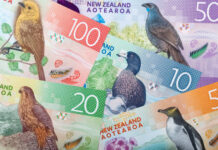Markets
US yields powered through yesterday with new year-to-date highs for all maturities in the 2y-10y range. The post-payrolls gains increased between 1.8 and 4.1 bps with the front end of the curve underperforming. Tenors from the 5y on did ease from intraday highs when US dealings were running warm, eventually resulting in the typical inversion you’d expect when the Fed is being forced to keep rates high for a while longer. Today’s kick-off to the US mid-month refinancing operation with a $58 bn 3-year auction could trigger more of the same ahead of the widely anticipated US March CPI on Wednesday. Tomorrow and Thursday has a $39 bn 10-y and $22bn 30-y sale scheduled. German Bunds underperformed with yields rising 1.6 (30y) to 5.2 bps (2y). They had some catching up to do with the US. Domestically, German industrial production rose for a second month straight. That didn’t happen for a year, suggesting Europe’s largest economy may have seen the worst. Interest rate differentials developing in favour of the euro combined with a mild risk sentiment (European stocks +0.6%) helped EUR/USD to rebound from as low as 1.0821 towards 1.086. The combination isn’t going anywhere this morning. We don’t expect that to improve later today given the vast emptiness on the economic calendar. The typical risk-off currencies bit the dust. USD/JPY hit an intraday high of 151.94, less than an inch away from critical resistance at 151.95. Japanese government and BoJ officials hit the wires on a near-daily basis, this morning included, with verbal warnings against excessive yen moves. Central bank governor Ueda reiterated the need for supportive monetary policy with the price trend being still below 2%. It’s necessary now to check how wage growth evolves in the hard data after the spring talks (which resulted into a 5.24% negotiated wage increase). EUR/CHF surged from 0.976 to 0.983 for a first, decisive close north of 0.98 since mid-2023. The Swedish krona outperformed G10 peers yesterday. Riksbank officials increasingly pay attention to the currency risk of a delayed Fed (and ECB) cutting cycle. It may mean that the earlier flagged May cut could be either too soon or shouldn’t be seen as the beginning of a rapid easing cycle, or perhaps both. EUR/SEK hit an intraday low of 11.43 from an open at 11.53 before paring losses to 11.47. The pair did close below the 200dMA though. The likes of the Aussie dollar profited from sharply rising copper and iron prices and continue to do so this morning. Brent oil only temporarily dropped below the $90/b level after reports that Israeli forces would leave southern Gaza. It is currently trading back at $90.54 with the market still being extremely tight.
News & Views
One-year ahead consumer inflation expectations in the NY Fed survey remained unchanged at 3.0% for the third consecutive month. In contrast, three-year ahead inflation expectations increased to 2.9% from 2.7% whereas the five-year ahead measures decreased to 2.6% from 2.9%. Median home price growth expectations were unchanged for the sixth consecutive month at 3.0%. The series remained within a narrow range of 2.8% to 3.1% since June 2023. With respect to other economic variables monitored in the survey, the perceived probability of losing one’s job in the next 12 months increased by 1.2 percentage points to 15.7%, the highest reading since September 2020. However, the probability of leaving one’s job voluntarily increased by 1.1 percentage points to 20.6%. Medium expected household income growth was unchanged at 3.1% while household spending growth was seen easing 0.2% to 5.0%. Perceptions of credit access compared to a year ago improved slightly. The average perceived probability of missing a minimum debt payment over the next three months rose by 1.5 percentage points to 12.9%, the highest since the start of the pandemic.
The British Retail Consortium retail sales growth monitor showed a 3.2% Y/Y increase in March on a like-for-like basis, up from 1% in February and beating 1.8% consensus. It was the fastest Y/Y-pace since August. Retail spending figures are not seasonally adjusted. The improvement was largely driven by Easter falling unusually early (March 31) and the subsequent uplift to food sales in the week preceding the long weekend. Food sales were up 6.4% Y/Y in the 3 months to March whereas non-food sales were down 2.9% Y/Y over that same reference period.












